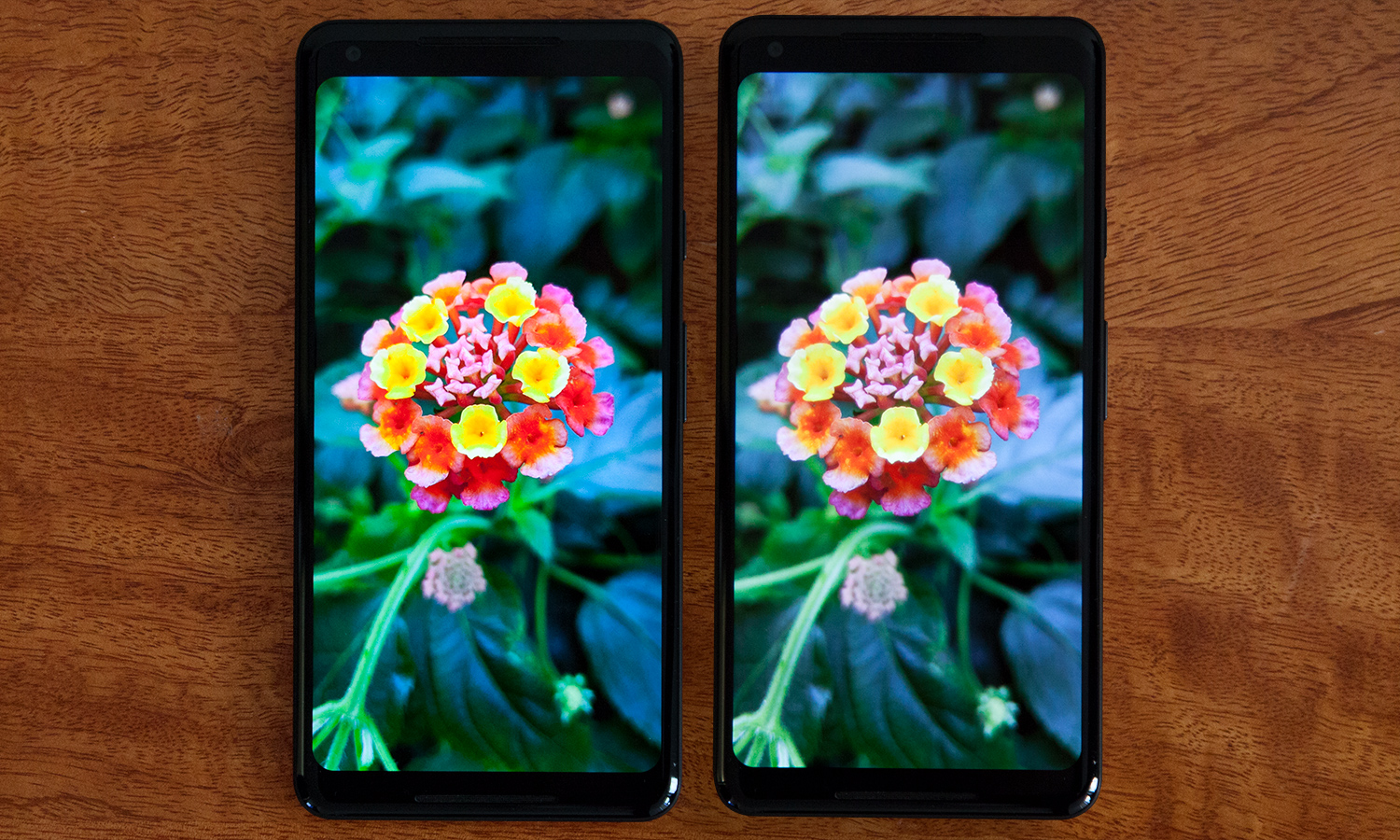Tested: Pixel 2 XL Screen Improved by Update
Google has delivered on its promise to update the Pixel 2 XL's display, and while it doesn't fix every issue, critics should like what they see.
As excellent as Google's latest flagship smartphones are, the Pixel 2 XL has been hamstrung by a number of issues since launching in October. Many of them concern the phone's 6-inch plastic OLED display, which has been tagged with everything from muted, washed-out colors to burn-in. It's even been said to experience an odd "black smear" phenomenon, evident in dark, fast-moving content.

Last week, Google pushed out an update that addresses some of these concerns. The release includes a new Saturated color mode that ratchets up the intensity of bright hues beyond the existing Standard and Boosted (formerly Vivid) settings. It's also designed to minimize burn-in. Our unit in the office has finally received the update, so we're taking a look at how it compares.
The option is located under the Display submenu in Settings; simply tap the Advanced drop-down menu, then Colors. Upon switching to Saturated, I immediately noticed a slightly more reddish white balance. When I returned to the home screen, the neon green of the Spotify logo and rainbow of hues in the Google Play icon certainly popped in a way they didn't in Standard mode, which employs an sRGB color profile. The live wallpaper, a tide rolling into a rocky beach, had richness and contrast that were lacking previously.
MORE: iPhone X vs. Pixel 2 XL Camera Face-Off
Many phones include optional sRGB color modes, but both Pixel 2 devices are unusual in that they default to sRGB. This isn't typically the case with most devices, simply because the market tends to favor more robust color. Still, there is something dull and dim about the Pixel 2 XL's interpretation of sRGB even compared to the competition. And Boosted mode is still pretty restrained, so we're happy to see Google provide more options.
Unfortunately, the update deals exclusively with color. The screen's other issues — namely, poor viewing angles and splotchy solid hues — are still present, as there's not much Google can do about them via software. The same goes for the display's brightness. At 438 nits, it's mediocre among smartphones but pales in comparison to the iPhone X's screen.
Speaking of that, when Google's phone is compared to the iPhone X, there's no question that the Pixel 2 XL's colors pack a bigger punch on Saturated mode. This isn't surprising, considering Apple's flagship doesn't offer a selection of viewing profiles as you'll find on many Android phones. The iPhone X opts for a much more natural balance by design, though its brightness advantage makes it look striking without venturing into extremes.
Get instant access to breaking news, the hottest reviews, great deals and helpful tips.
Ultimately, if you thought the Pixel 2 XL's screen tuning was faded, you should be more satisfied now. The display still can't quite measure up to that of the iPhone X or the Galaxy Note 8, but it's good to see Google give its users extra choices.
Adam Ismail is a staff writer at Jalopnik and previously worked on Tom's Guide covering smartphones, car tech and gaming. His love for all things mobile began with the original Motorola Droid; since then he’s owned a variety of Android and iOS-powered handsets, refusing to stay loyal to one platform. His work has also appeared on Digital Trends and GTPlanet. When he’s not fiddling with the latest devices, he’s at an indie pop show, recording a podcast or playing Sega Dreamcast.
